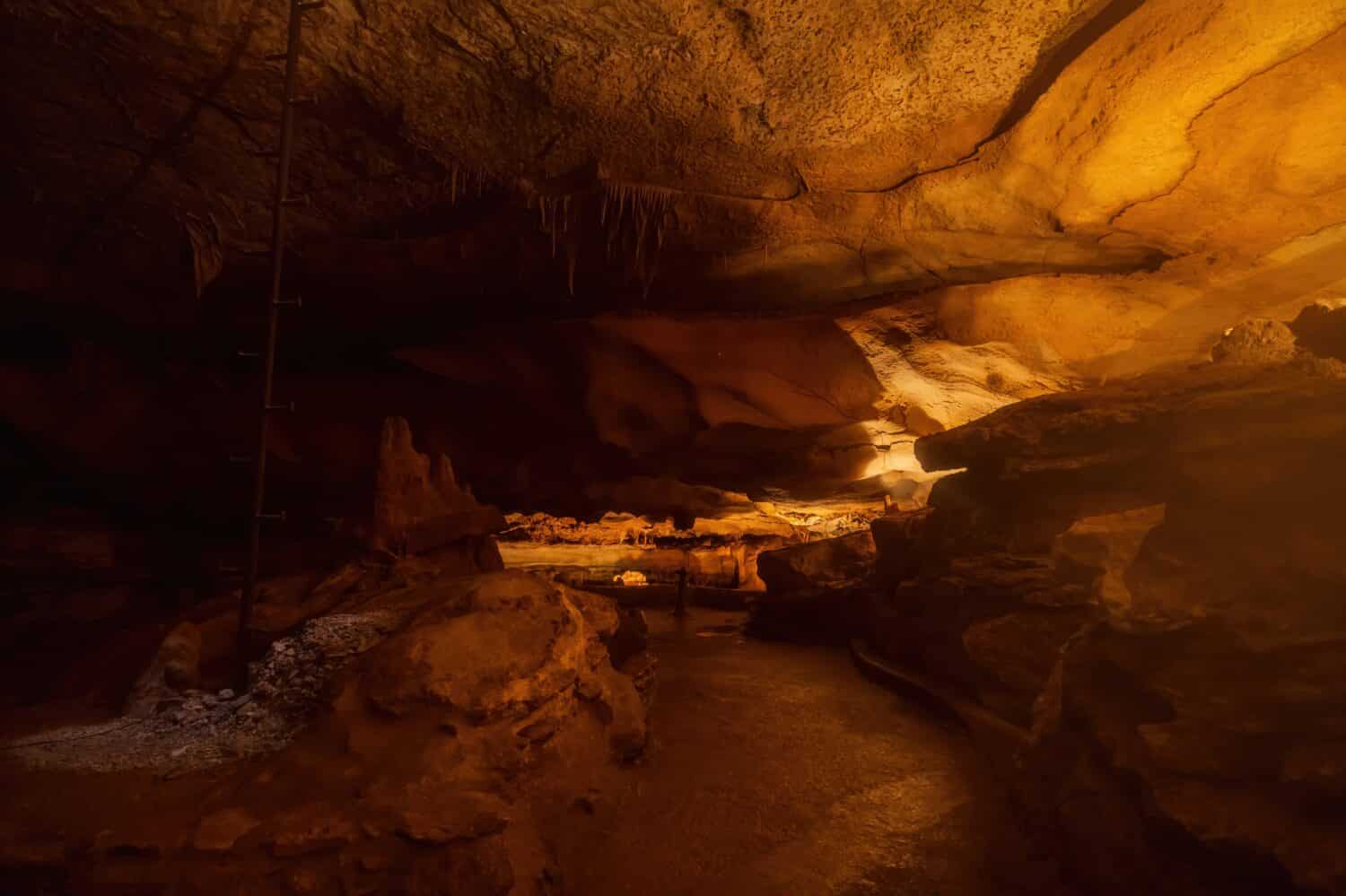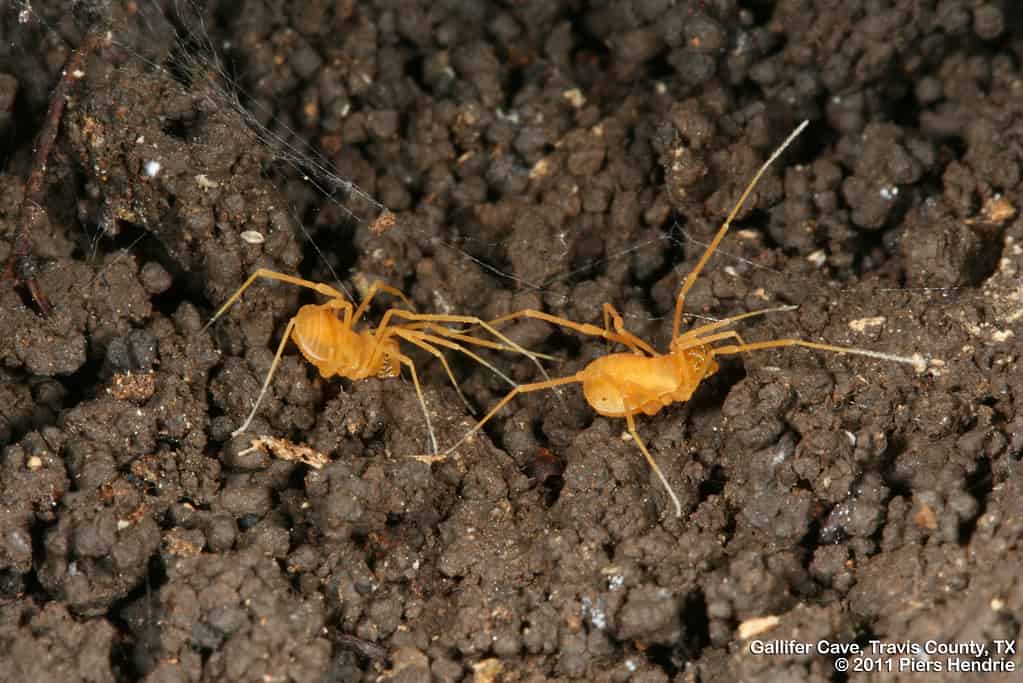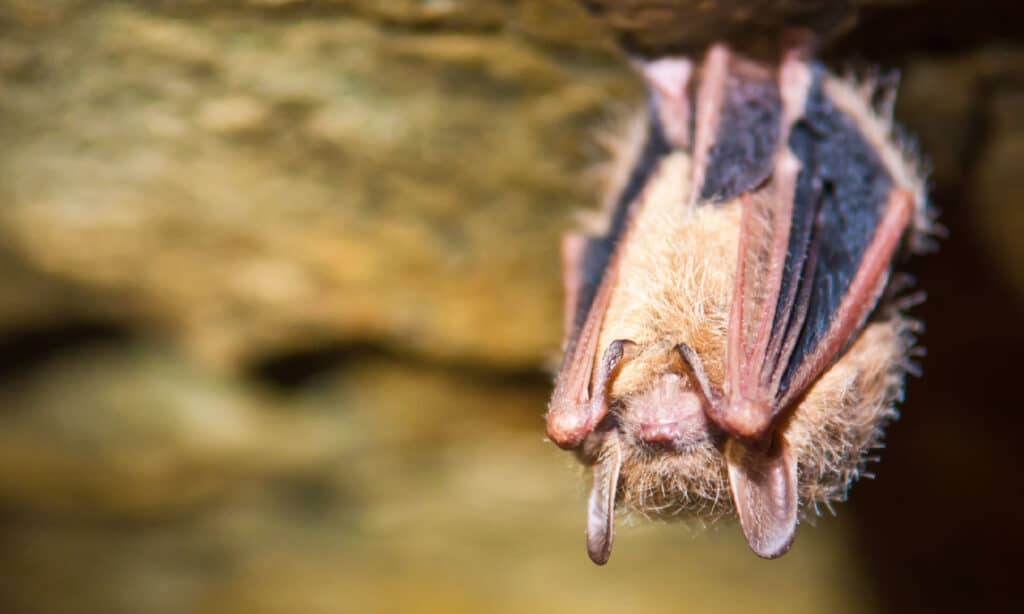Beneath Georgetown, Texas lies an ancient cavern full of incredible rock formations and a wealth of fossils that was, until recently, hidden from the outside world. In this article, we’ll explore the history of Georgetown’s own Inner Space Cavern. We’ll find out how and when it was discovered, what lived — and still lives — inside, and how visitors can experience the cavern for themselves.
The History and Discovery of Inner Space Cavern
Despite being tens of millions of years old, the cavern entered public knowledge very recently. Workers with the Texas Highway Department discovered it accidentally during a ground stability test that was part of overpass construction along Interstate 35. While drilling one of the necessary core samples, the drill bit broke through the ceiling of the cavern, dropping 26 feet into the depths below. After subsequent drilling attempts yielded the same outcome, the crew decided to investigate further. They increased the size of one of the holes until they could lower one of the crews beneath the ground using the drill bit. As the worker clung to the bit, descending more than 40 feet through ancient limestone, he became the first ever human being to experience Inner Space Cavern.
The Texas Speleological Association quickly caught word of the discovery. Within a few months, a team gained rope access to the cavern and began mapping out the accessible parts of the void. Over the next several days, the team slogged through the cavern’s sticky mud and surveyed more than 7,000 feet of accessible rooms and passages!

Over several days in 1963, a team from the Texas Speleological Association mapped more than 7,000 feet of traversable space within the cavern! Later, parts would be paved to allow visitors easy access.
©Kit Leong/Shutterstock.com
Soon after the mapping began, so did the commercialization of the cave by the newly formed Georgetown Corporation. During efforts to construct a tourist attraction within the cavern, crews discovered and mapped an additional two-and-a-half miles of accessible space! Three years after the discovery, in 1966, the cave was open to the public. Since then, hundreds of thousands of visitors have witnessed the story that the cavern’s breathtaking rooms, unique geological formations, and surprising fossil record tell of a prehistoric Earth.
Geology of the Cavern
The cavern exists along the eastern edge of the Balcones Fault Zone, which runs southward from Dallas toward Del Rio. Approximately 25 million years ago, at this fault, the section of the Earth’s crust that forms East Texas began to slip below that of Central Texas. In small increments over millions of years, the eastern block fell between 700 and 1,000 feet! Parts of the fault line are visible in the chamber walls within the cavern.
Though the age of the cavern itself is uncertain, it formed in Edwards limestone which is around 100 million years old. As acidic water percolated through the cracks in the fault line and into the Edwards aquifer, it pulled the reactive limestone into solution. Over millions of years, this led to the formation of a solution cave consisting of large, subterranean chambers and passageways. The cave is still changing today as water moves about its passageways, slowly creating new formations, adding to old ones, and wearing away future openings.

Inner Space Cavern is a solution cave, which formed over time as water seeped through the Balcones Fault and pulled the limestone into solution.
©Kit Leong/Shutterstock.com
Cave Formations
As the cavern formed and the space inside opened up, stalactites and stalagmites began developing on the floor and ceiling. Sharp stalactites, which grow from cave ceilings, form due to acidic water percolating through the stone above. When the water reaches the cave, it forms droplets on the ceiling. As these droplets partially evaporate, they deposit some of the calcium carbonate that they collected on their journey through the limestone above. When the drops grow large enough to eventually fall, they deposit even more calcium carbonate on the cave floor below. As it builds up, it forms mounds or spikes called stalagmites. Sometimes, stalagmites and stalactites will grow so large that they join in the middle and form a column! These formations can be incredibly fragile and often take millions of years to form.

Stalagmites, stalactites, columns, and many other formations decorate the miles of accessible space inside the Inner Space Cavern.
©Kit Leong/Shutterstock.com
The movement of water through Inner Space Cavern, from above and below, has decorated the rooms with many incredible formations. One chamber houses The Volcano, a unique conical formation that likely occurred due to the intrusion of water through the floor of the cave. Geologists estimate that a large, plugged sinkhole could have created the pressure difference needed to force groundwater into the open room. This could very well be the case, as many sinkholes have formed in and around the cavern throughout the Pleistocene era. Some even opened parts of the cavern to the outside world.
Life in the Inner Space
Having had multiple sinkhole entrances in the last 25,000 years, Inner Space Cavern has certainly been home to life in its past. Unfortunately, most of that life did not fare well. The cavern’s impressive fossil record shows that, while it was open to the surface, many animals fell inside and were unable to escape. Paleontologists have recovered fossilized remains of ancient animals like mammoths and saber-toothed cats, as well as those from extinct species of bats, prairie dogs, and diminutive horses. Some of the finds are quite surprising for the area, showing that giant jaguars, glyptodonts, and giant ground sloths roamed Texas as recently as 15,000 years ago! The recovered remains also include multiple complete skeletons from a long-extinct species of peccary.
Endangered Invertebrates
Since its most recent connection to the surface, explorers have found that Inner Space Cavern is home to a great diversity of invertebrate life. Among these invertebrates are two endangered species, the Bone Cave harvestman (Texella reyesi), and the Coffin Cave mold beetle (Batrisodes texanus). Both species are endemic to the cave systems of the Edwards Plateau, appearing in Williamson and Travis counties and nowhere else in the world.

The Bone Cave harvestman is a tiny cave-dwelling arachnid that exists in only two Texas counties. Because it lives entirely in the dark, it has evolved away from having eyes.
©Piershendrie / CC BY-SA 3.0 – License
Since 1994, many attempts have been made to remove the species from the endangered species list to allow further development of the land above their habitats. Continued expansion of the Austin Metropolitan Area into these lands would further pollute and threaten the already sensitive limestone cave habitats that these and many other species rely on. Though the U.S. Fish and Wildlife Service denied the most recent petition in December of 2022, attempts to delist the species are likely to continue.
Bat Conservation
At one point in its history, Inner Space Cavern was home to a gigantic colony of about 50,000 Brazilian free-tailed bats (Tadarida brasiliensis)! Long ago, however, when the sinkhole entrances closed, these bats were denied entry to the cavern. Today, with the cave once again open to the surface, new species of bats call the cavern home.
One species, the tricolor bat (Perimyotis subflavus), uses the cave extensively for hibernation. They are uniquely tolerant of humans, showing no fear of the many visitors that pass through the cavern every day. Because of their gentle nature and reliance on the cavern for habitat, the cavern’s guides guard them very closely. Visitors are not allowed to interact with the bats except to take a photo. Even then, they must disable their camera’s flash to avoid disturbing them while they sleep.
The tricolor bat is one of the continent’s smallest bats, averaging only a few inches in length. The babies are small enough to fit in a matchbox! On spring, summer, and fall evenings, resident bats exit the cavern to feed on any insects they can catch. Come morning, some return to the cave to rest. Eventually, as winter approaches, those that roost there enter hibernation among the cavern’s ceiling formations.

At any time, up to 100 tricolor bats may be roosting among the cavern’s cave formations.
©iStock.com/JasonOndreicka
Unfortunately, these and other cave-dwelling bats are facing extinction due to several factors. One, white-nose syndrome, is a deadly fungal infection that affects hibernating cave bats. Researchers aren’t yet sure where the disease came from. In some locations, it has wiped out entire bat colonies. Other factors include displacement and habitat destruction. For this reason, the guides at Inner Space Caverns take pride in their ability to provide vital habitat to these tiny bats.
Visiting Inner Space Cavern
Since the development of the cave by the Georgetown Corporation, Inner Space Caverns has been a popular attraction for locals and tourists alike. From the visitor center on the surface, guests can book tours of the cave, find out information, and check out some of the incredible fossil finds. There are restrooms, snacks, and water available as well.
While the original explorers of the cavern descended by rope from a hole in the ceiling, visitors today enjoy much easier access. A cable car transports passengers to the first underground chamber by way of a 300-foot-long tunnel. From there, guides take visitors on three different tours, each of which varies in difficulty.

Guides take visitors on tours of the cavern, showing them decorated open rooms, lit displays, and even a light show. Some tours are more rigorous and give visitors a real caving experience!
©Kit Leong/Shutterstock.com
Inner Space Tours
The first and most family-friendly tour, the Adventure Tour, takes visitors on a roughly one-hour tour down the cavern’s walking trail. The trail is paved, gently sloping, and well-lit, with handrails and non-slip mats throughout, making access easy for the entire family. There are no age limits for this tour and visitors do not need to reserve a spot ahead of time. Because of the long walk and risks inherent to the cave environment, the company recommends visitors wear comfortable, closed-toe shoes.
Next up is the Hidden Passages Tour. This limited-availability tour is more in-depth, taking visitors down one of the cavern’s more rugged trails. There is no lighting in this part of the cave, and guides provide each visitor with a flashlight. Because parts of the trail cut through dark and narrow passages, guides recommend that those with claustrophobia choose a different tour.
The Wild Cave Tour is for those who want to get down and dirty. This experience takes visitors on a three- to four-hour journey deep underground, through a series of open chambers and tight, rugged passageways. Requiring crawling, climbing, hiking, and tight squeezes, it is by far the most authentic tour of the cavern. The trail is strenuous and the guides require that visitors wear the helmet, headlamps, and various pads that they provide. Because of the cavern’s slick mud, participants should wear long pants, a throwaway shirt, and boots with aggressive tread and good ankle support. Guests younger than 13 may not take this tour, and those younger than 17 need to bring a parent or guardian with them.
The photo featured at the top of this post is © JD Hiker/Shutterstock.com
Thank you for reading! Have some feedback for us? Contact the AZ Animals editorial team.







